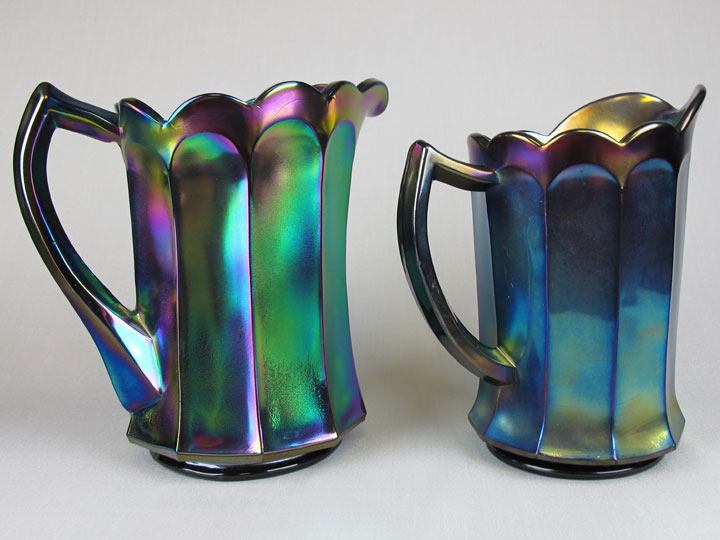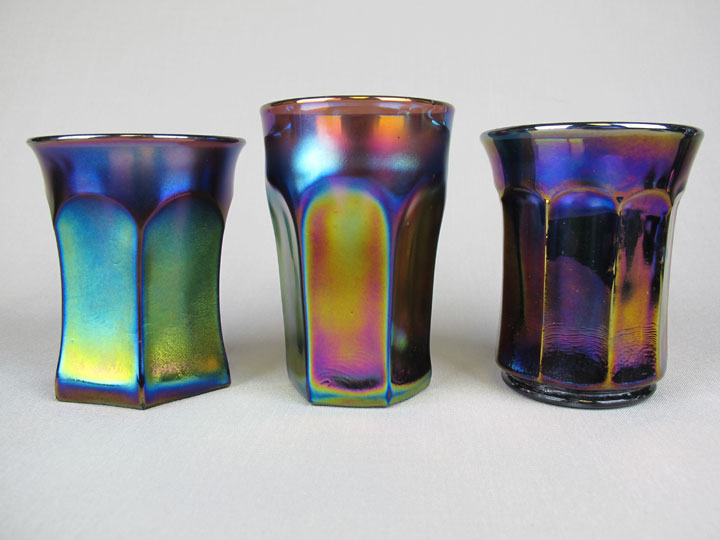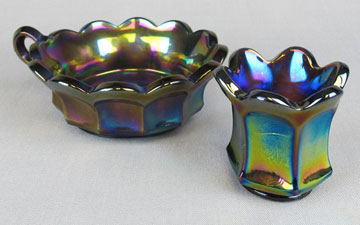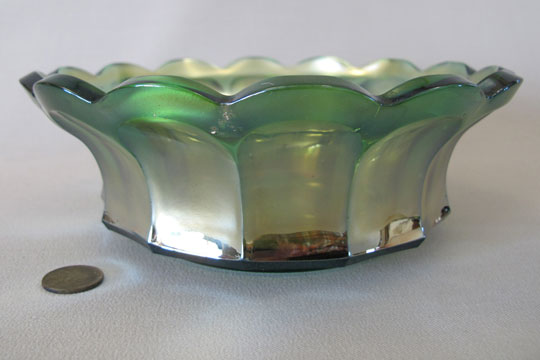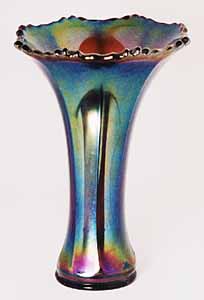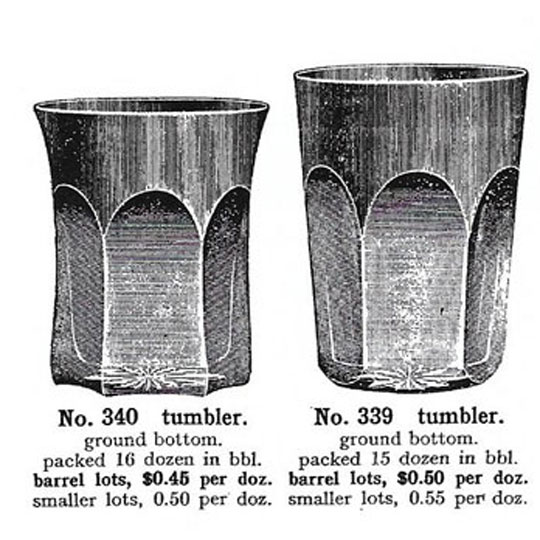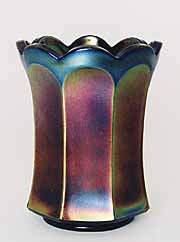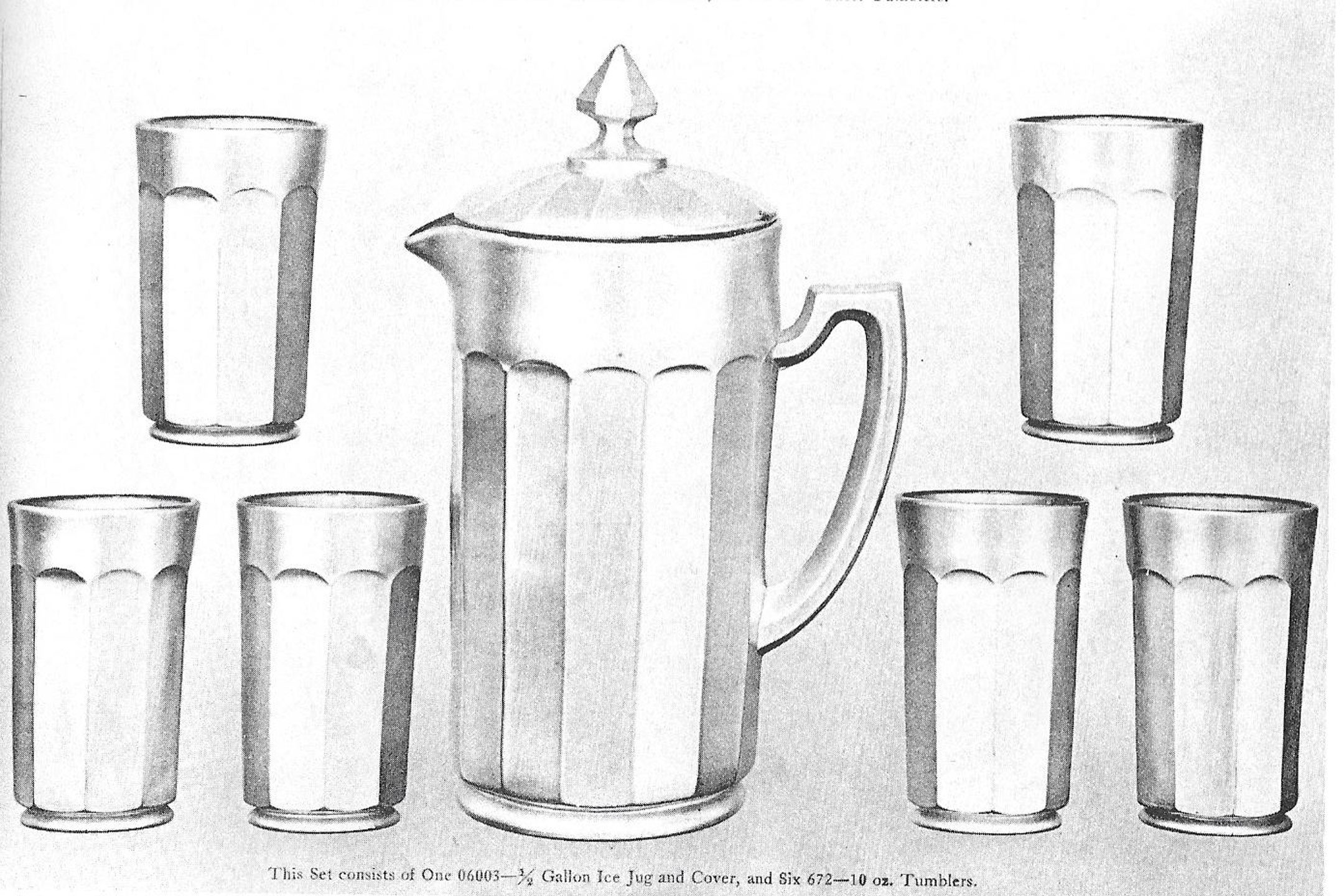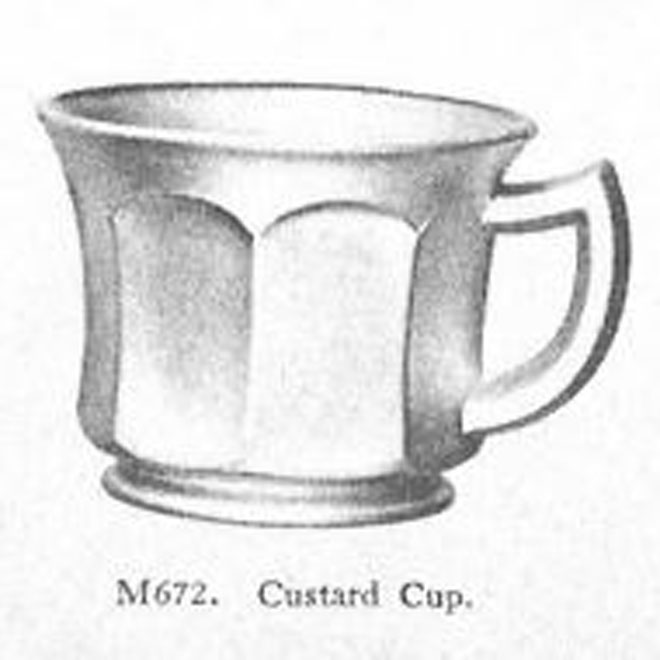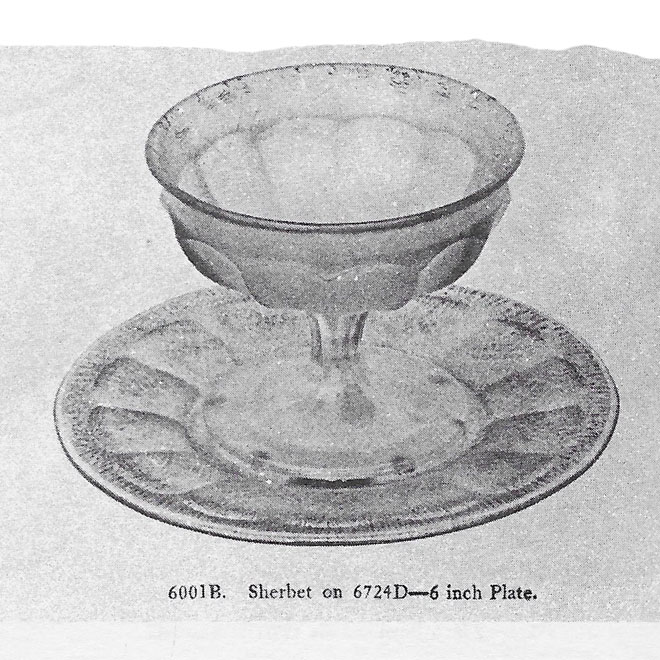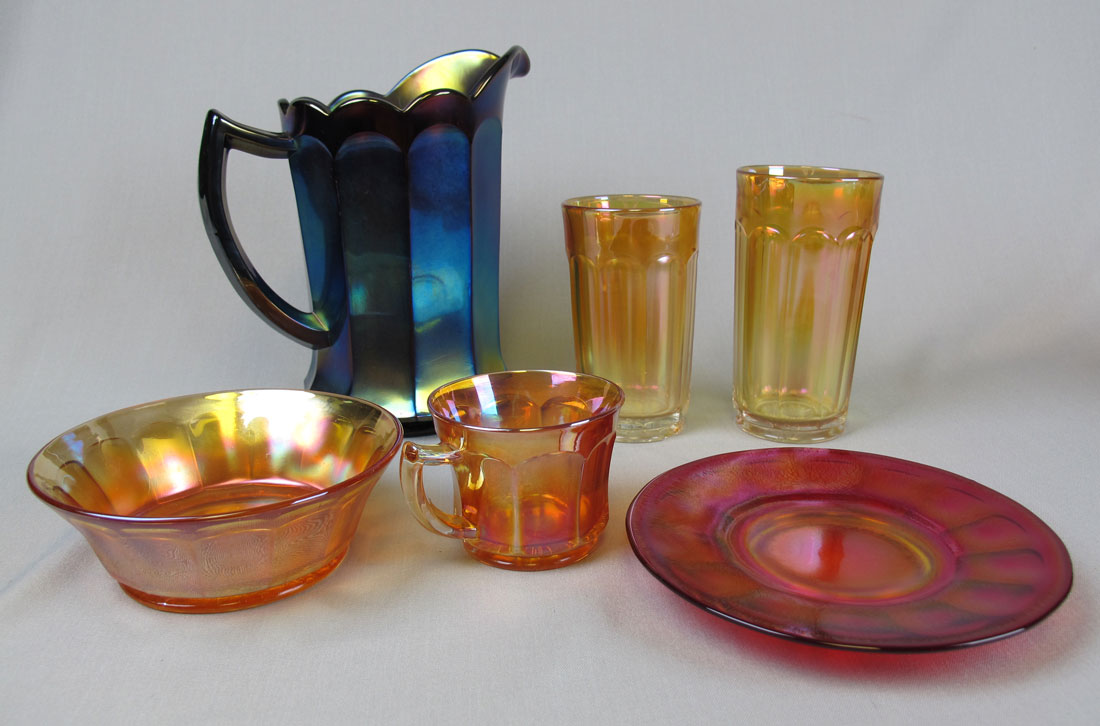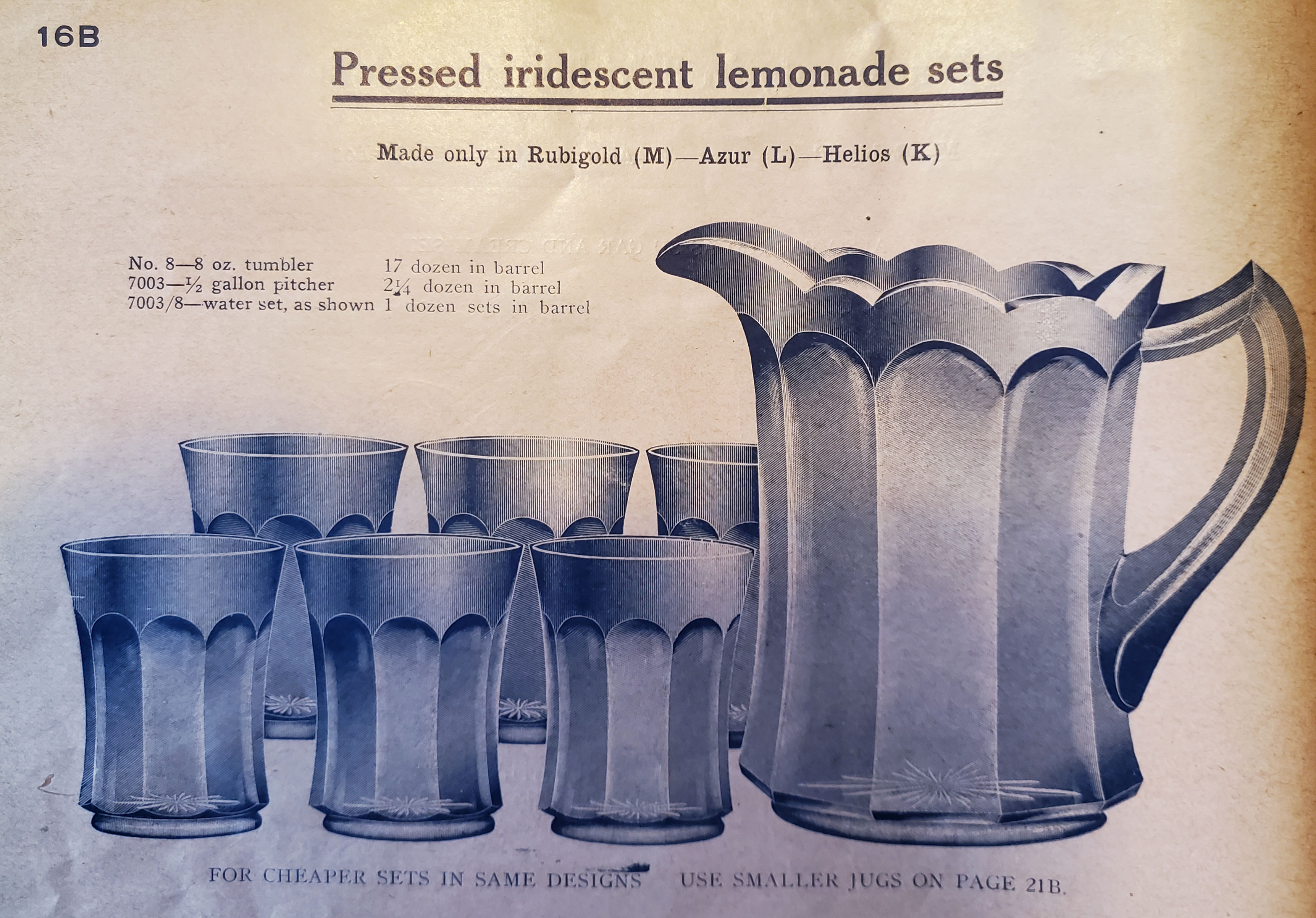| Several shapes are known in what we call Imperial's Flute pattern and are listed in early Imperial catalogs as coming from both #672 and #700 molds. The pitchers above to the left has the characteristic handle with the pointed top. On the water pitcher, the handle flares out where the bottom of it attaches to the body of the pitcher. On the milk pitcher, the handle does not flare out but stays the same size where it attaches to both the top and bottom. Both pitchers have ten flutes around the piece and sit on a collar base. Each flute ends in a scallop at the top. The handles to the water and milk pitchers are both attached on the edge of two flutes. Both the large water pitcher and the small milk pitcher are from a #700 mold even with the different shape of the handle at the bottom. Imperial's 103B catalog, from about 1917, lists both as a #700 mold and states that a water set may be purchased cheaper with the smaller pitcher.
There are no known #700 tumblers but it appears that the #700 water pitcher was paired with up to 3 different tumblers to make a complete water set. The tumblers are referred to as variations #1, #2 and #3 and are shown in the photo to the right in order. Tumbler #1 has six flutes and flares out slightly at the base. Tumbler #1 appears to be mold #340 and is shown in the ad at the bottom of this page. Tumbler #2 is a taller tumbler also with six flutes and tapers in at the bottom. Tumbler #3 has nine flutes and a collar base and is shown in Imperial's 103B catalog as mold #8 and paired with the large #700 water pitcher to form a set .
Water sets are found in clambroth, marigold, purple and teal. Certain tumblers are also found in blue. |
